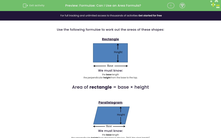Use the following formulae to work out the areas of these shapes:
Rectangle
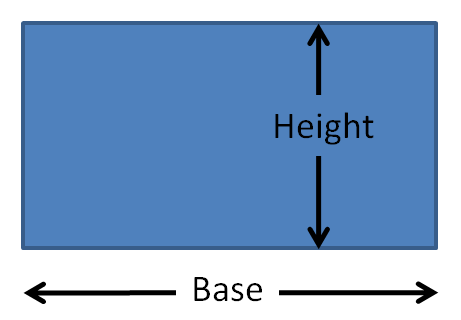
We need to know:
- the base length
- the perpendicular height from the base to the top.
Area of rectangle = base x height
Parallelogram
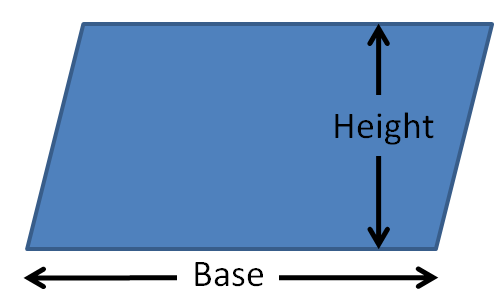
We need to know:
- the base length
- the perpendicular height from the base to the top. (not the slant height)
Area of parallelogram = base x height
Triangle
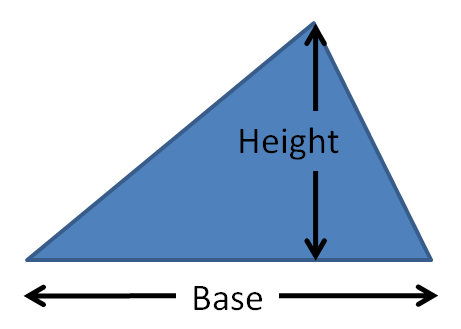
We need to know:
- the base length
- the perpendicular height from the base to the apex. (not the slant height)
Area of triangle = ½ base × height
or
Area of triangle = base × height ÷ 2
Example 1
Can an area formula be used to work out the area of this parallelogram, and if so, which one?
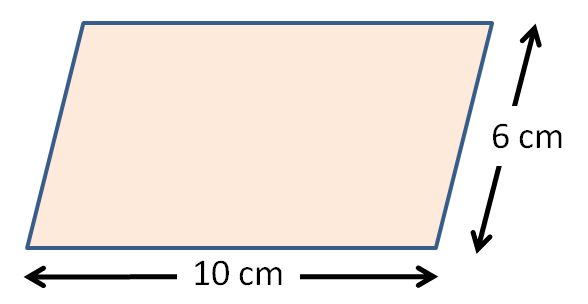
Answer
This is a parallelogram.
We need to know:
- the base length
- the perpendicular height from the base to the top. (not the slant height)
We know the base length and the slant height, but not the perpendicular height.
So, no, we cannot use the area formula.
Example 2
Can an area formula be used to work out the area of this triangle, and if so, which one?
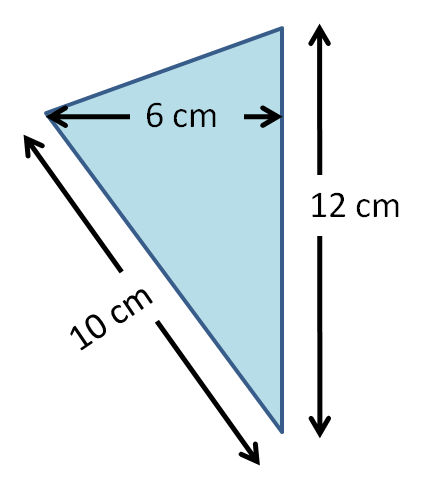
Answer
This is a triangle.
We need to know:
- the base length
- the perpendicular height from the base to the top. (not the slant height)
If we turn our heads to the left, the base length is 12 cm and the perpendicular height is 6 cm.
We do not need to know the slant height of 10 cm to use the formula.
Yes, we can use the area formula:
Area of triangle = ½ base × height
Shall we do it then - just for fun!!
½ x 12 x 6 = 36 cm2
Right, let's try some questions now.

